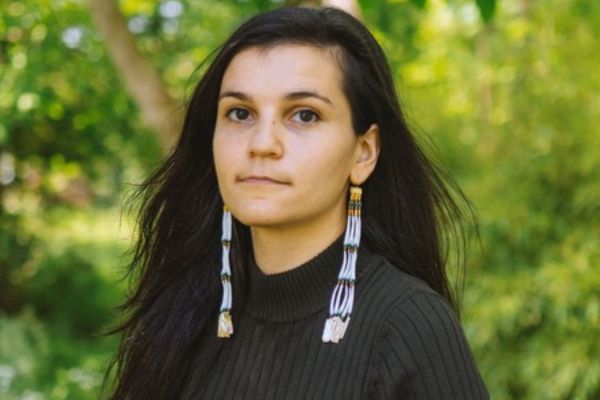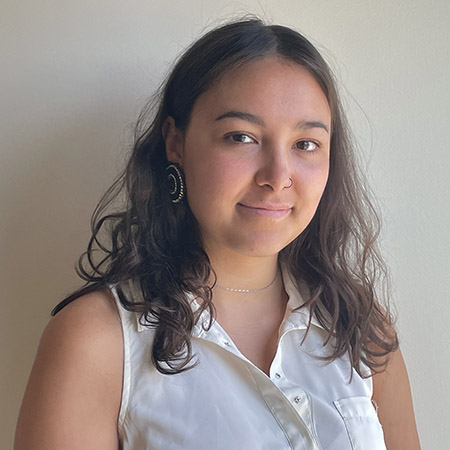
- Details
- By Neely Bardwell
Art historian Darienne Turner, an enrolled member of the Yurok Tribe of California, will officially join the Brooklyn Museum this August. She is currently an assistant curator of Indigenous Art of the Americas at the Baltimore Museum of Art, where she has worked since 2017.
At the Baltimore Museum of Art, she was the first Native person to hold a curatorial role. She received her Bachelor of Arts in comparative literature at Stanford University and studied the literature of the Americas. Turner also studied material culture at Bard Graduate Center while taking classes at the Institute of American Indian Arts.
Native News Online sat down with Turner to discuss her future plans as the Brooklyn Museum’s new Indigenous art curator, fighting to include Indigenous perspectives and creating space for more Native Americans in the museum industry.
This interview has been edited for clarity and length.
What inspired you to become an art historian?
I grew up in a household that was filled with Yurok baskets. My great-grandmother was a master basket weaver, and other women in my family have taken that up as well. I really feel like that serves as the foundation of my interest in art history. I always loved going to museums growing up but seeing Native representation and museums was not always a happy experience.
I remember seeing Native people and cultures on view in natural history museums, and it’s painful to see Native art, people, and diagrams of Native people next to dinosaur bones. I’ve even been to museums as an adult and cried because I just feel like it’s so unjust that Native people are misrepresented as artifacts of the past. So that really pushed me to focus on art history.
I’ve studied a variety of contexts, so it’s not always just been Native art. Ultimately, it just always comes back to this question, though, of how Natives deserve to be seen in spaces that are usually not Native focused — particularly encyclopedic museums, where they have collections from all over the world for all time. They don’t have a great track record when it comes to Native art, so there’s a lot of work that needs to be done.
One word that we hear in the industry a lot is "decolonize." “Are you going to decolonize the museum?” My stance is that’s a helpful term in some respects, but ultimately, we can’t decolonize something that is so profoundly colonial. These are encyclopedic museums filled with goods that were taken up through colonialism, artworks that were taken from Native people, and maybe they were purchased or maybe not. We just really need to reckon with the fact that colonialism is alive in these institutions, and it’s something that needs to be pressed upon and interrogated and fought against.
What has been your experience going through archives and going through Indigenous artifacts that museums hold?
I think one of the biggest benefits of being a curator is being able to be with all the relatives that are reflected in our objects. So my favorite thing to do is to walk into our vault and just listen to what wants to be heard. Sometimes that means bringing Native elders or culture bearers through the vault and just opening each drawer up and seeing what they want to speak to, what objects require attention, and maybe the database information was missing.
Maybe there are more stories that can be told about these particular objects that we didn’t know when they were accepted back in 1956 or whenever. So to me, that is really important. Actually, just listening to the objects was something that inspired my Lakota beadwork show that put on view objects that Lakota women had beaded American flags onto at the turn of the century. That was a really profoundly traumatic time for the Lakota people. They’ve just been forced on the reservation. So seeing these objects really pressed me to ask the question, “Why would these people put the symbol of their oppressor on kids’ clothing, you know, on men’s vests on boots?”
That was really what propelled me into curating my first exhibition at the BMA, just exploring that history and uncovering or rediscovering Lakota people knew this all along. But uncovering the story. In the BMA that these were really symbols of resistance. This was a way that would code if people could maintain cultural practices that would be otherwise stamped out. You put a flag on it and celebrate, quote, unquote, celebrate Fourth of July. Then you can do purity ceremonies and giveaways as, and you know, battle reenactments that were not allowed in any other context.
One word that we hear in the industry a lot is "decolonize." “Are you going to decolonize the museum?” My stance is that’s a helpful term in some respects, but ultimately, we can’t decolonize something that is so profoundly colonial.
So what are some of your roles and responsibilities going to be as the new curator at the Brooklyn Museum?
In my mind, the biggest thing is always going to be community connections. Brooklyn has a great track record of doing amazing exhibitions and programming that centers Native Voices today and looks at historic Native artworks. So I get to build upon that legacy, which is such a wonderful thing. Bringing community members into the conversation and contact with their relatives, their relatives being the art objects, is so important to me. Making sure that Native voices are visible throughout the museum is really important.
I will be working on a reinstallation of the American art wing, which is super exciting. In the longer term, I will be working on special exhibitions that blend historical and contemporary art. And longer term than that, I will be working on a full collection reinstallation.
So while it’s really important that Native stories get told in that American art context because Natives are Americans, it’s also important to tell Native stories on their own terms outside of the paradigm of colonialism. So by doing a reinstallation that’s just focused on Native art, you’re allowed to tell stories that don’t necessarily fit into other art historical canons.
Knowing that many museums disproportionately exclude Indigenous perspectives, how do you plan to fight against that?
I just really want museums like the Brooklyn Museum to ask: “How are we relevant? Who are we relevant to? Who is our core audience, and how do we make sure that Native people fit into that rubric?” Leadership matters, and there is an openness to doing that kind of hard work and self-interrogation and thinking about what it means to be a colonial institution.
So asking questions on how I can facilitate better relationships with our Native audience members and encyclopedic museums is really central to what I’m thinking about, and also asking, “What is the purpose of the artworks and the repositories that hold them? What is our responsibility as an organization, and more specifically, what is my responsibility as a native person in a largely nonnative staff, and throughout my career?” I’m used to being the only Native American, the first Native American that ever did any curatorial work.
At the Baltimore Museum of Art, it’s like I’m the first and the only. That ended up being my experience a lot, but through that, I hope to make space for others and make sure that there are opportunities for other Native museum professionals to be involved or Native people that gain access to spaces that haven’t been there previously.
How does it feel to be the first Native in a lot of these spaces?
It feels good, but it’s also hard. There’s a big responsibility that comes with that. I feel like I need to be held accountable to my community members, and while that’s an incredible privilege, it’s a lot. It’s a lot to be the only one.
As much as I can make space for other professionals, I do. I was able to bring a really lovely curatorial research assistant to help with the preoccupied project whose Osage. To me, it was so important to be able to hire someone else who is Native, so we can support each other, and I can work with someone who just gets it, who knows what it’s like. So to me, we all have to make space for one another and make sure we’re lifting up all the Native voices that we can.
More Stories Like This
Vision Maker Media Honors MacDonald Siblings With 2025 Frank Blythe AwardFirst Tribally Owned Gallery in Tulsa Debuts ‘Mvskokvlke: Road of Strength’
Zuni Youth Enrichment Project and Partners at Ho’n A:wan Productions Launch 8th Annual Delapna:we Project
Chickasaw Holiday Art Market Returns to Sulphur on Dec. 6
Center for Native Futures Hosts Third Mound Summit on Contemporary Native Arts
Help us defend tribal sovereignty.
At Native News Online, our mission is rooted in telling the stories that strengthen sovereignty and uplift Indigenous voices — not just at year’s end, but every single day.
Because of your generosity last year, we were able to keep our reporters on the ground in tribal communities, at national gatherings and in the halls of Congress — covering the issues that matter most to Indian Country: sovereignty, culture, education, health and economic opportunity.
That support sustained us through a tough year in 2025. Now, as we look to the year ahead, we need your help right now to ensure warrior journalism remains strong — reporting that defends tribal sovereignty, amplifies Native truth, and holds power accountable.
 The stakes couldn't be higher. Your support keeps Native voices heard, Native stories told and Native sovereignty defended.
The stakes couldn't be higher. Your support keeps Native voices heard, Native stories told and Native sovereignty defended.
Stand with Warrior Journalism today.
Levi Rickert (Potawatomi), Editor & Publisher


